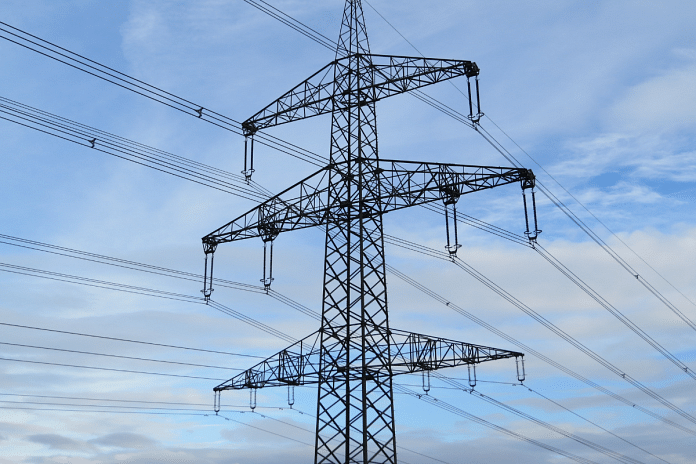Private sector participation has been touted as a panacea for all ills affecting the electricity sector in India ever since the reforms began in the 1990s. After Odisha’s failed experiment with privatisation in 1996, impetus from the central government has meant privatisation gained momentum again. However, politics makes the sector impervious to meaningful reform. Privatisation is crucial for improving the electricity sector’s regulatory governance, as well as Indian states’ finances.
Power sector reforms in the 1990s were based on the World Bank’s “Independent Regulatory Agency” (IRA) model, which used the New Public Management (NPM) philosophy, separating policy making, regulatory, and service delivery. It had three objectives — unbundling state electricity boards (SEBs), creating independent regulators, and inducing private sector participation. Though slowly, unbundling and setting-up of regulatory commissions were implemented between 1996-2013. However, distribution privatisation has been limited, which has affected the political independence of the sector.
Experience with privatisation
Odisha was the first state to privatise its distribution utilities in 1996. In 1999, the state was hit by the BOB 06 cyclone. The decision to reverse privatisation was accredited to the lack of government support for infrastructural damage caused by the cyclone. Delhi privatised its discoms in 2002 through a public-private partnership (PPP) model, which later evolved to full private ownership.
The reluctance on the part of other states to privatise discoms meant an alternative method of private participation was explored, i.e., through appointing distribution franchisees (DFs). Bhiwandi, Maharashtra was the first city in India to experiment with the DF model when the Maharashtra State Electricity Distribution Company Limited (MSDCL) awarded the area to Torrent Power. Agra, and Kanpur in Uttar Pradesh; and Aurangabad, Jalgaon, and Nagpur in Maharashtra soon followed suit.
The Shunglu Committee and Chaturvedi Panel favored the DF and PPP model, respectively for increasing private participation to improve discom finances. The states preferred the DF model over PPP as it meant that the ownership remained with them. However, even the DF model lost its attractiveness after several states either aborted the attempt to appoint DFs or cancelled the awarded licenses. The last awarded DF was in Rajasthan in 2016.
Also read: US visa waiver will be a significant win for Netanyahu. But Biden is in no mood for gift-giving
Effects on regulatory governance
Private sector participation was one of the main requirements in the series of reforms initiated through the Electricity Act. Non-fulfilment of the same has limited the success of other reforms. In a comparative study examining the influence of electricity regulatory commissions (ERCs) in decision-making, I found that even though the Electricity Act 2003 (section 7 to 63) vests absolute influence to ERCs, their de facto influence is significantly lower.
Data from three states—Maharashtra, Chhattisgarh, and Delhi—signaled that the influence of discoms on decision-making for tariff determination is similar to that of the ERCs, contrary to what the Electricity Act desired. A plausible reason for the same is the control of state governments over the distribution utilities, which leads to one arm of the government regulating the other arm. This makes sense given the repeated use of free or cheap electricity as an electoral plank.
The non-fulfilment of the last step in the overall reform process has meant that even though ERCs have become central to regulatory decision-making in the Indian power sector, the state governments continue to yield undue influence, thereby causing aberrations to regulatory governance in the sector. Private participation—in line with the proposals under the Electricity Act—will strengthen the IRA ecosystem and achieve the envisaged objective of limiting the role of government to providing policy direction rather than service delivery.
Also read: What Modi’s guarantee to make India 3rd largest economy means for PM probables Yogi, Shah
Privatisation and state finances
The continued involvement of the state government in the distribution sector has also over-burdened the public exchequer. The artificial distortion of electricity tariff owing to political pressures has time and again led to discom bailouts, which in turn has increased the debt to GSDP ratio, as underlined by the Reserve Bank of India Bulletin from June 2022.
Even though the DF model shows mixed results, its adoption has aided distribution utilities in improving their finances. Maharashtra, one of the early adopters of the DF model, has one of the lowest debt to GSDP ratios of 18.1 per cent. The state also benefits from the fact that Mumbai has private distribution licensees, and the state government has seen increasing private participation in the generation and transmission segment.
Odisha, which recently re-privatised its distribution utilities has a debt to GSDP ratio of 18.8 per cent. On the other hand, Punjab’s massive GSDP to debt ratio of 47.6 per cent is partially attributed to its provision of free electricity to its large number of agricultural consumers. The total bailout size, courtesy UDAY, in Odisha and Maharashtra were 0.6% and 1% of GSDP (FY 2020-21). Though there are several factors at play, one can infer a correlation between utilities’ financial health and states’ GSDP.
Power sector reforms are crucial for India’s socio-economic development. Inducing private participation is important to unleash the full potential of the implemented reforms. This will help in limiting political interference, thereby improving regulatory governance and state finances.
Dr. Shashwat Kumar is a fellow with the Chair in U.S.-India Policy Studies at the Center for Strategic and International Studies, Washington, DC. He has previously served as a postdoctoral fellow at the Institut Barcelona d’Estudis Internacionals, Spain where he researched on the regulatory and governance structures of the Indian electricity sector. Views are personal.
(Edited by Anurag Chaubey)



